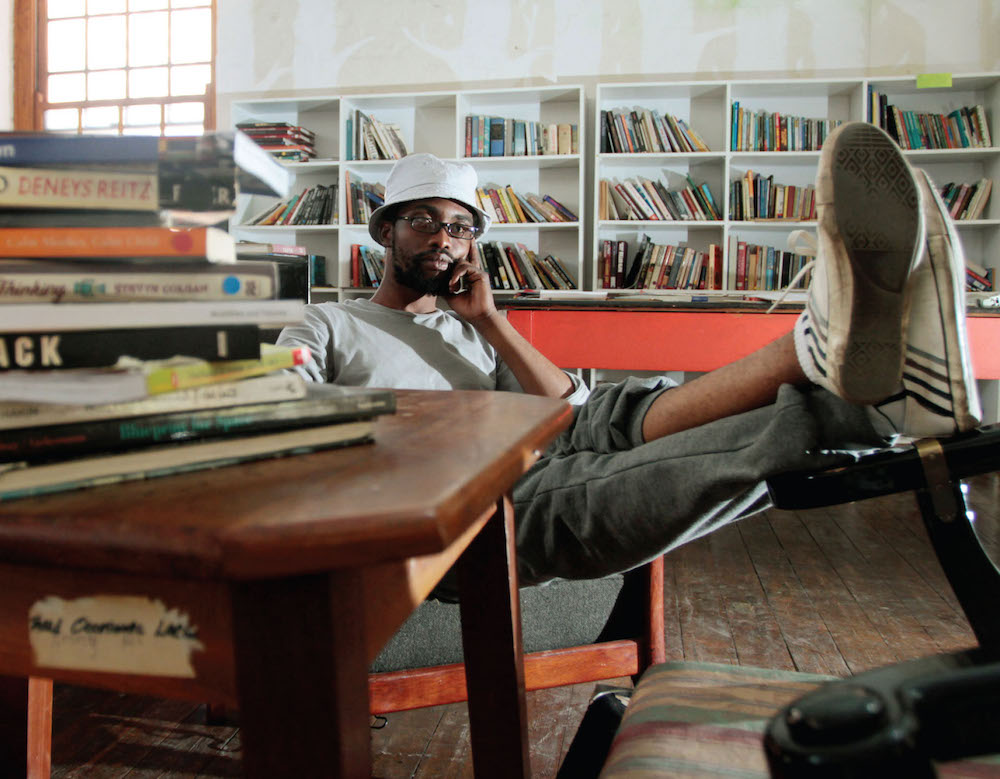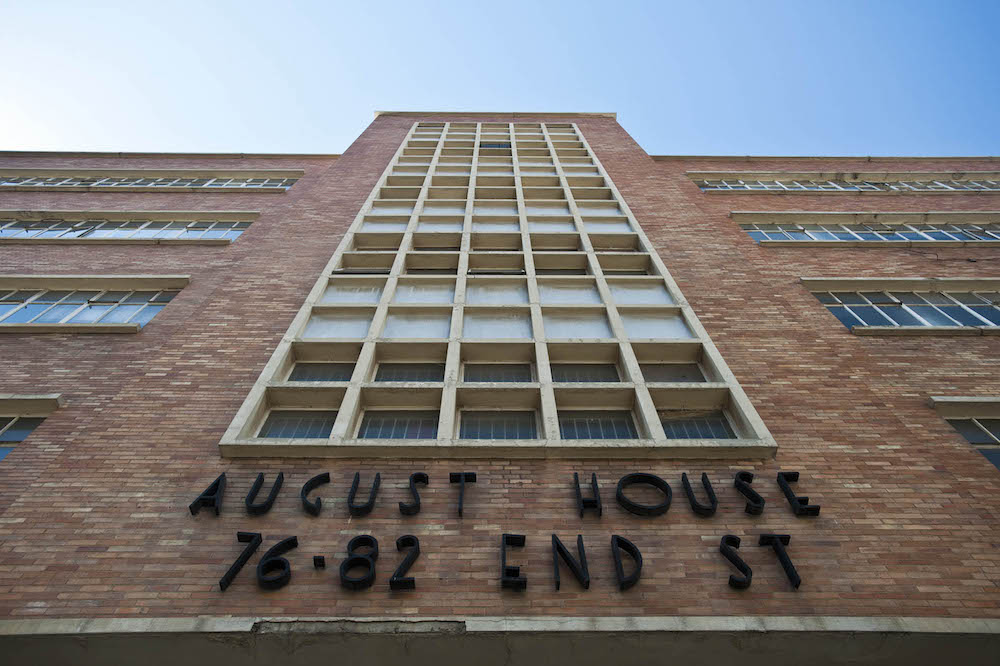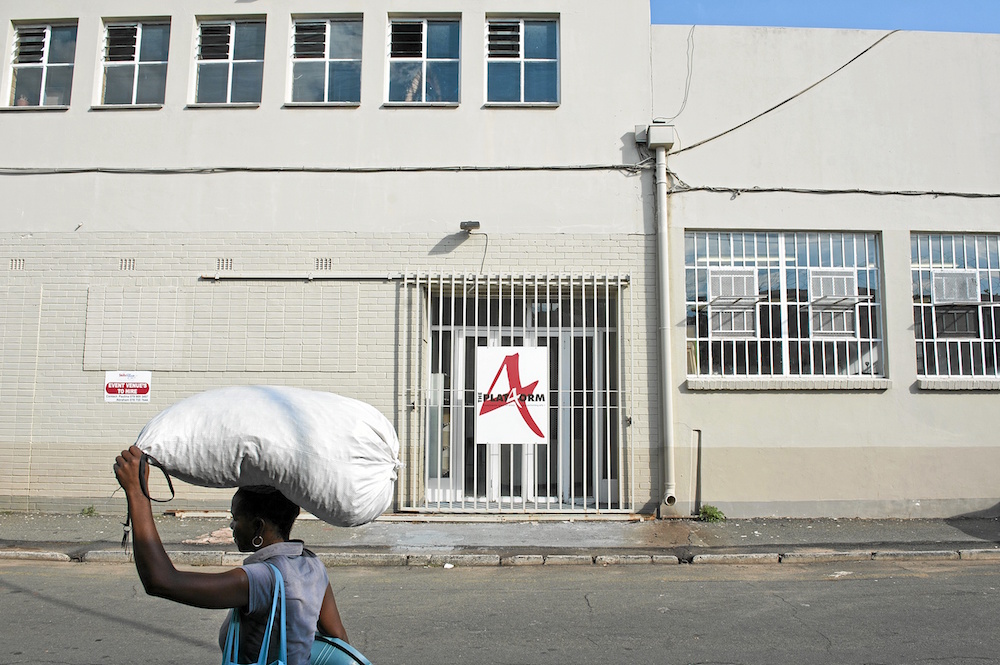The Drill Hall in Johannesburg.
A coffin blanketed in the six colours of the South African flag lies mounted on a stage in the Durban City Hall. On a banner is an unsmiling, youthful face in black-and-white. It proclaims boldly, perhaps too boldly: “Bringing our hero back home.”
This is a homecoming of sorts. The celebration of a hero who never was.
READ:
Art institutions and their ticket to survival
Funda: Dark days for iconic Soweto art school
Fifty years ago, Nat Nakasa’s spirit left his body when he jumped or fell from a seven-storey building and landed on a sidewalk in New York. The prolific and promising writer was studying at Harvard University on a Niemann Fellowship. On September?13 last year, the writer’s remains were finally returned home to be reburied in Heroes’ Acre in Durban’s Chesterville. Perhaps now, after committing a coffin, empty but for a few fractured and parched bones, to the ground, we can attempt to answer Nakasa’s question: What happens to the writings of a man when he is dead?
Dead and gone
“Afrika Cultural Centre, Newtown. Dead?
Afrikan Freedom Station, Westdene. Alive?
Alphabet Zoo, Newtown. Alive?
August House, Doornfontein. Backyard Gallery, Kagiso. Dead?
Black Sunday. Dead?
The Centre for Historical Re-enactments, Doornfontein. Continuously staging its own institutional suicides.
Fire on the Mountain. Dead?
Keleketla! Library. Mind Your Head. Dead? Almost. Maybe?
Fananathi Street Media. Alive?
Slaghuis, Soweto. The Platform, Bez Valley. Reherb, Berea. Point Blank Gallery, Joubert Park. Dead. Dead. Dead.”
This is visual artist Rangoato Hlasane’s litany for black creative spaces, a ritualistic roll call of some of the art spaces in Johannesburg that have informed the manner in which Hlasane navigates the city. All these spaces existed at some time since 2004. They challenge the meaning of space, expanding and testing the understanding of what variables constitute a space for art, for black creativity.

Rangoato Hlasane.
Unfortunately this register also reads as a record of the dead. These spaces occupied a Johannesburg previously forgotten – the invisible parts of a city rendered translucent, nonexistent, by capital and consequence. The post-mortem is inconclusive. It requires us to be intimate with ways of dying, with death in all its looks and forms. What happens when the buildings still stand, but the spirit once contained within has left, changed or adapted? What happens when the spaces go the way that most black institutions go. When they succumb, buckle, mutate; when their growth is stunted?
Memory is an unreliable narrator. History only negotiates with power, and so these spaces are now a necropolis of what was and could have been.
“Spaces for art from our own salaries or commissions will never get us permanent infrastructure. The conversation involves the co-operation of other people as well. And I think our BEE [black economic empowerment] brothers and sisters need to be in this conversation. They need to listen to us. We need to convince them, otherwise we’re just engaging in conversations that will never end. It’s not going to come from white capital or from government. Those guys just want to protect themselves,” Hlasane says.
It’s impossible to have a conversation about the state of art on the continent without unpacking its relationship to resources. Mainly, artists rely on three sources of funding and income: funding from foreign institutes, the commercial market and the state. A disproportionate amount of time and energy is spent seeking sources of funding and a disappointingly large number of decision-makers aren’t intellectually or ethically invested in art institutions. The result is often a patronising paternalism and an abusive, duplicitous relationship, which sees black arts bodies pandering to the whims of those funding them.
Achille Mbembe, in an article published in Chimurenga, expands on this: “Instead of spaces of mutuality, recognition and respect, donor agencies have established throughout the continent countless networks of patrons-clients relationships. These relationships are not one-dimensional. They are characterised by deep levels of collusion and complicity, unequal transactions, at times mistrust, and, in any case, reciprocal instrumentalisation.
“We can keep dressing up the unlimited power of the donors and the myriad forms of humiliation and indignity visited upon their ‘recipients’ in the fancy language of ‘partnership’, ‘empowerment’ or even ‘international friendship’.”
These words won’t mask the brutality of the encounter between those who have money and resources, although hardly any good or useful ideas, and those who have some good ideas but hardly any money.
According to Hlasane, who holds a master’s degree in visual art from the University of Johannesburg and teaches at the University of the Witwatersrand School of Arts, the situation is made worse by five major trends.

August House.
First, the neoliberal drive to monetise and privatise all forms of art and parts of life has resulted in the endless commodification of culture as spectacle and entertainment. This is a significant development. It comes at a time when global capitalism itself is moving into a phase in which the cultural forms of its output are critical elements of productive strategies. The capacity of art and culture to engage critically with the power of capital can no longer be taken for granted.
Second is the relentless pressure from African governments to consider art and culture as a kind of social service, whose function is to cure the ailments of poverty and underdevelopment. Third is the hyper-technological framing of the life-world and the growing implication of art and culture in global systems of militarisation of consciousness – which raises deep concerns over the limits of freedom in the militarised landscape of our times.
Fourth is the “humanitarian” impulse of most Western donor agencies – the vicious ideology that promotes a view of Africa as a tabula rasa, a doomed and hopeless continent waiting to be rescued and “saved” by the new army of Western Good Samaritans. And finally there is the conflation of African art, culture and aesthetics with ethnicity, community or communalism.
He says the dominant but false idea, shared by many Africans and many donors, is that the act of creativity is necessarily a collective act, that African artistic forms are not aesthetic objects per se but ciphers of a deeper level of the “real”, which is fundamentally ethnographic and expressive of Africa’s ontological cultural difference or “authenticity”.
It is this African “difference” and African “authenticity” that donors are keen to find, support and, if necessary, manufacture.”
He adds that African art is funded by Western donor agencies, produced in foreign residencies and hangs in European galleries. On the continent, our archived efforts resemble mausoleums and not museums. Building art initiatives that are sustainable and can be institutionalised requires artists to sacrifice their core work and function as interlocutors on cultural governance; research and the development of cultural policy and practise; the commercial market; and art education and resources. It’s a lot to take on.
“That’s why we burned out with Keleketla! – we couldn’t be artists and property managers of the Drill Hall. The situation with Drill Hall, with the lease being held back from the national department of public works and the City of Johannesburg, [is] they know when they’re ready to use that building, and what they want to use it for. See, they’re dealing with Joubert Park as a ‘complex neighbourhood’. They view their biggest problem as the taxi rank, Noord, and the ‘difficulties it creates’,” he says.

The Platform.
“JAG [Johannesburg Art Gallery] is struggling, Drill Hall is struggling, and these are state spaces. Tagore’s [a jazz club in Cape Town] was about to shut down because someone wanted to buy the building. Mind Your Head had their lease revoked. We don’t own anything. So imagine someone like those Maboneng dudes come through, the city will be relieved to no longer have to deal with this complex issue.”
It also means that the artist already occupying it will be encouraged to propagate an agenda, in lieu of having the means to manufacture art, he says.
“The issue will still stand, Maboneng, or an institution like it, will own the spaces of production, the spaces of creativity. We still don’t have a space.”
Black artists have been pushed into circumstances where we’re negotiating corners for our existence, and, therefore, negotiating how we can create, dream, breathe, Hlasane says. The current lie of the land means that black artists have little to no independence. Autonomous cultural and artistic infrastructure needs to be developed, divorced from the benevolent dictatorship that has characterised black art in South Africa and on the continent as a whole.
“The state won’t create the spaces – they want capital, normally white capital, to do so for them. We need to get black business aligned with us.
“But that’s our energy, our personal investment. Dealing with these structural issues is a sacrifice. Anything else takes attention away from my core work. We need the means and the resources. We’re not equipped to deal with the structural issues.
“Regardless of all these things, we don’t stop. We mutate, we adapt, we evolve. The conversation of ownership – yes, we need to initiate it – but the actual answer does not belong solely to us.”